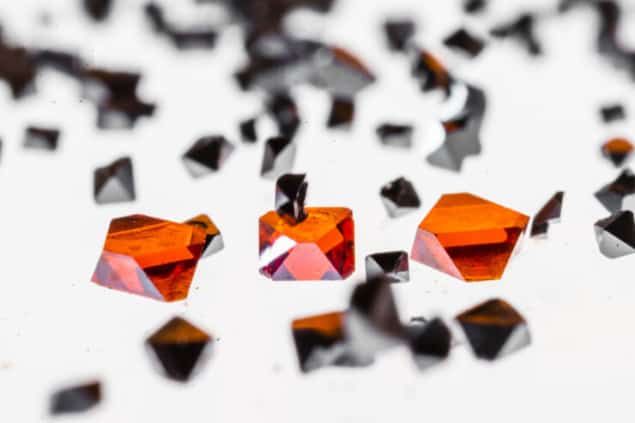
A new “double perovskite” material could become a more environmentally friendly platform for spintronics devices thanks to its lead-free nature. While the material in its current form is only magnetic below 30 K – too low for practical applications – developers at Linköping University in Sweden, together with colleagues in the US, the Czech Republic, Japan, Australia and China, say that their preliminary experiments are nevertheless a promising step towards making rapid and energy-efficient information storage devices from this novel optoelectronic material.
Halide perovskites in general have an ABX3 structure, where A is caesium, methylammonium (MA) or formamidinium (FA); B is lead or tin; and X is chlorine, bromine or iodine. Materials of this type absorb light over a broad range of solar spectrum wavelengths thank to their tunable bandgaps, and the electrons and holes within them diffuse quickly over long distances (high charge carrier mobility and lifetime). These properties make them attractive building blocks for high-performance optoelectronic devices such as solar cells, light-emitting diodes, lasers and photodetectors.
Spin-related properties
Recently, researchers discovered that lead halide perovskites also boast interesting spin properties thanks to lead’s strong spin-orbit coupling. This coupling links the motion of an electron to its quantum spin, and its strength determines how much the intrinsic spin of an electron will interact with the magnetic field induced as the electron moves through the material. Such a coupling is therefore important not only for the magnetic properties of a material, but also for the performance of any spintronics devices – that is, devices that exploit the spin of an electron as well as its charge – that are made from it.
Until now, lead-based halide perovskites were thought to be the only materials in their class to possess this desirable magnetic property. Because lead is toxic for humans, animals and the wider environment, its presence has limited the materials’ development.
Preliminary experiments
Now, however, a team led by Feng Gao has created a new perovskite material that retains the magnetic properties of its lead-based cousin but contains paramagnetic iron ions (Fe3+) instead of lead. The team created this material by incorporating the iron ions into a perovskite made of caesium, silver, bismuth and bromine, with the chemical formula Cs2AgBiBr6. In a series of measurements made using near edge X-ray absorption fine structure (NEXAFS) and solid-state nuclear magnetic resonance (ssNMR) techniques, Gao and colleagues showed that Fe3+ replaces Bi3+ in this iron-alloyed double perovskite and forms FeBr6 clusters that are evenly distributed throughout the material’s crystal structure.
According to combined SQUID (superconducting quantum interference device) and ESR (electron spin resonance) measurements, the new perovskite material is magnetic at temperatures below 30 K. While Gao acknowledges that this temperature is too low for practical applications, he also points out that the material is still at a very early stage in its development. The researchers add that they are not even completely sure what is causing its magnetic response, although their results suggest that it is probably due to a weak ferromagnetic or anti-ferromagnetic response from localized regions in the material.

Controlling magnetism using a proton pump
“If so, we have a whole new class of halide double perovskite alloys that can potentially be used for spintronics applications,” Gao says. “But more research is needed, not least to obtain the magnetic properties at higher temperatures.”
The researchers, who report their work in Science Advances, say they now plan to repeat their experiments at higher pressures and use chemical co-doping and alloying to try to retain the material’s magnetic properties at higher temperatures. “We will also be focusing on the structure-property relationships of magnetic double perovskites to better understand how to design these materials,” Gao tells Physics World. “We hope that our work will encourage future efforts in exploring spintronic double perovskites for rapid and energy-efficient information storage.”



